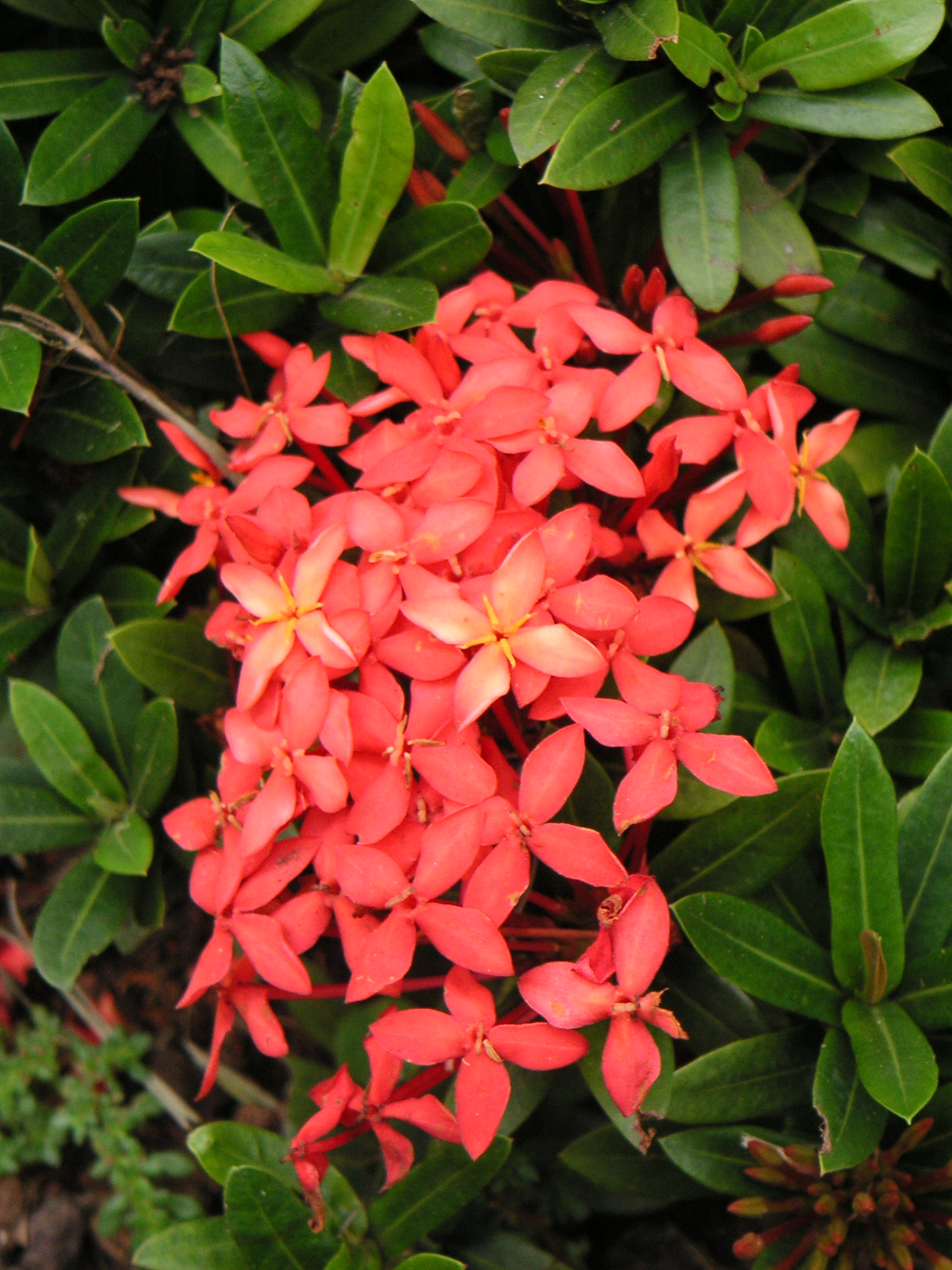Common Name: scarlet jungleflame
Family: Rubiaceae
Common Synonyms: Ixora montana
USDA Hardiness Zone: 9a-10b
Growth Habit: Evergreen shrub
Origin: Tropical southeast Asia, including southern India and Sri Lanka
FISC Category: -
FDACS Listed Noxious Weed: No
Introduction Date: Earliest FL specimen from 1986, but likely introduced much earlier
IFAS Assessment:

A dense, multi-branched evergreen shrub, commonly 1.2-2 m in height, but capable of reaching up to 3.6 m high. Ixora has a rounded form, with a spread that may exceed its height. The glossy, leathery, oblong leaves are about 10 cm long, with entire margins, and are opposite or whorled on the stems. Small tubular, scarlet flowers in dense rounded clusters 5-13 cm across are produced almost all year long. There are numerous named cultivars differing in flower color (yellow, pink, orange) and plant size. Several popular cultivars are dwarfs, usually staying under 3 ft in height.
High humidity and a moist, friable, well drained soil that is high in organics.
"IFAS comments relative to Ixora coccinea - ""not known to be invasive""."

No specific recommendations available, woody species can generally be treated with basal bark or cut-stump application of herbicides.
Dave's Garden. 2014. PlantFiles: Ixora, Flame of the Woods, Ixora coccinea. http://davesgarden.com/guides/pf/go/445/. Accessed on June 20, 2014.
Gilman, E.F. 2012. Ixora coccinea. IFAS, EDIS Publication #FPS 291. http://edis.ifas.ufl.edu/fp291. Accessed on June 28, 2014.
Wunderlin, R. P., and B. F. Hansen. 2008. Atlas of Florida Vascular Plants (http://florida.plantatlas.usf.edu/).[S. M. Landry and K. N. Campbell (application development), Florida Center for Community Design and Research.] Institute for Systematic Botany, University of South Florida, Tampa.